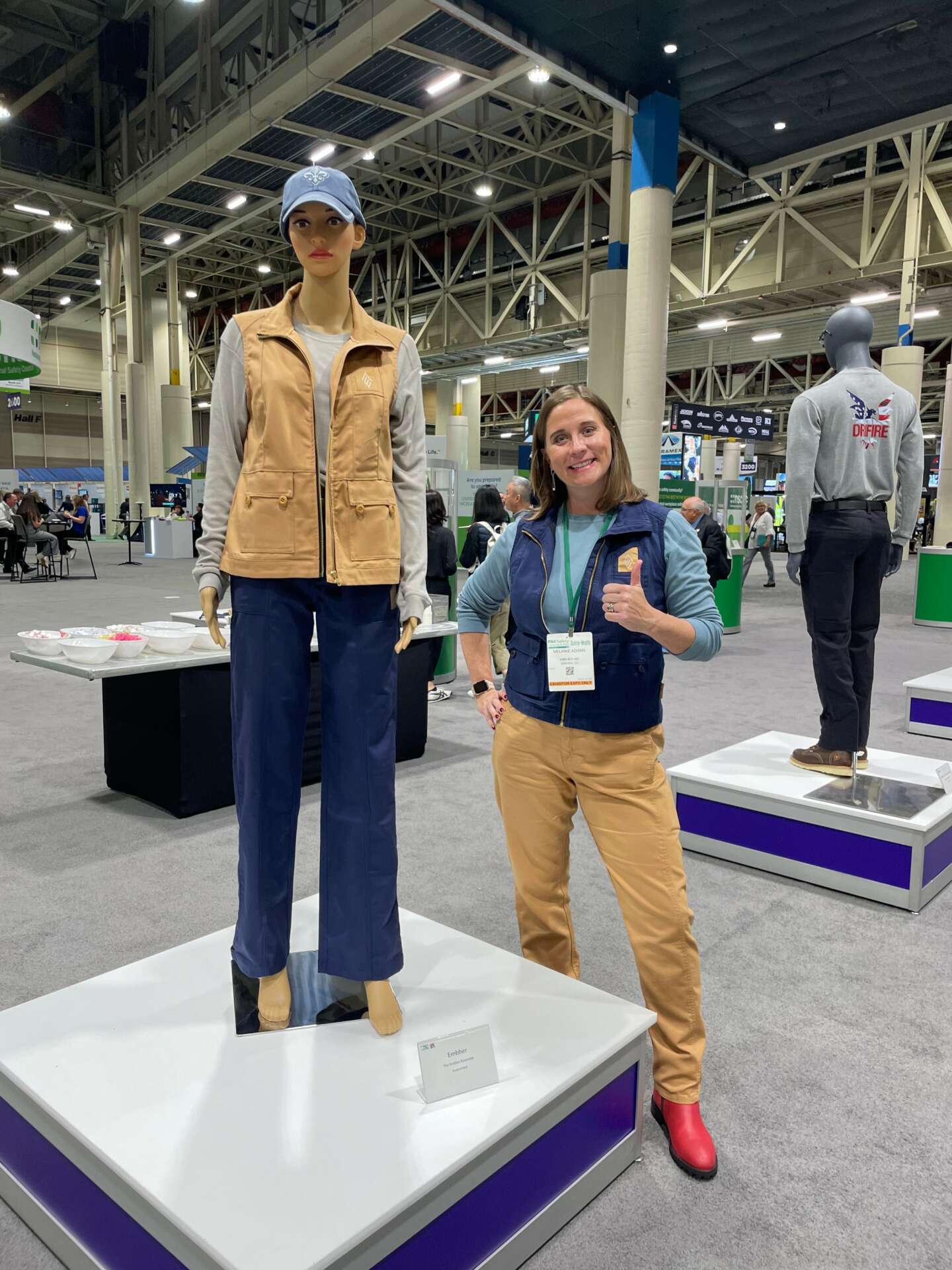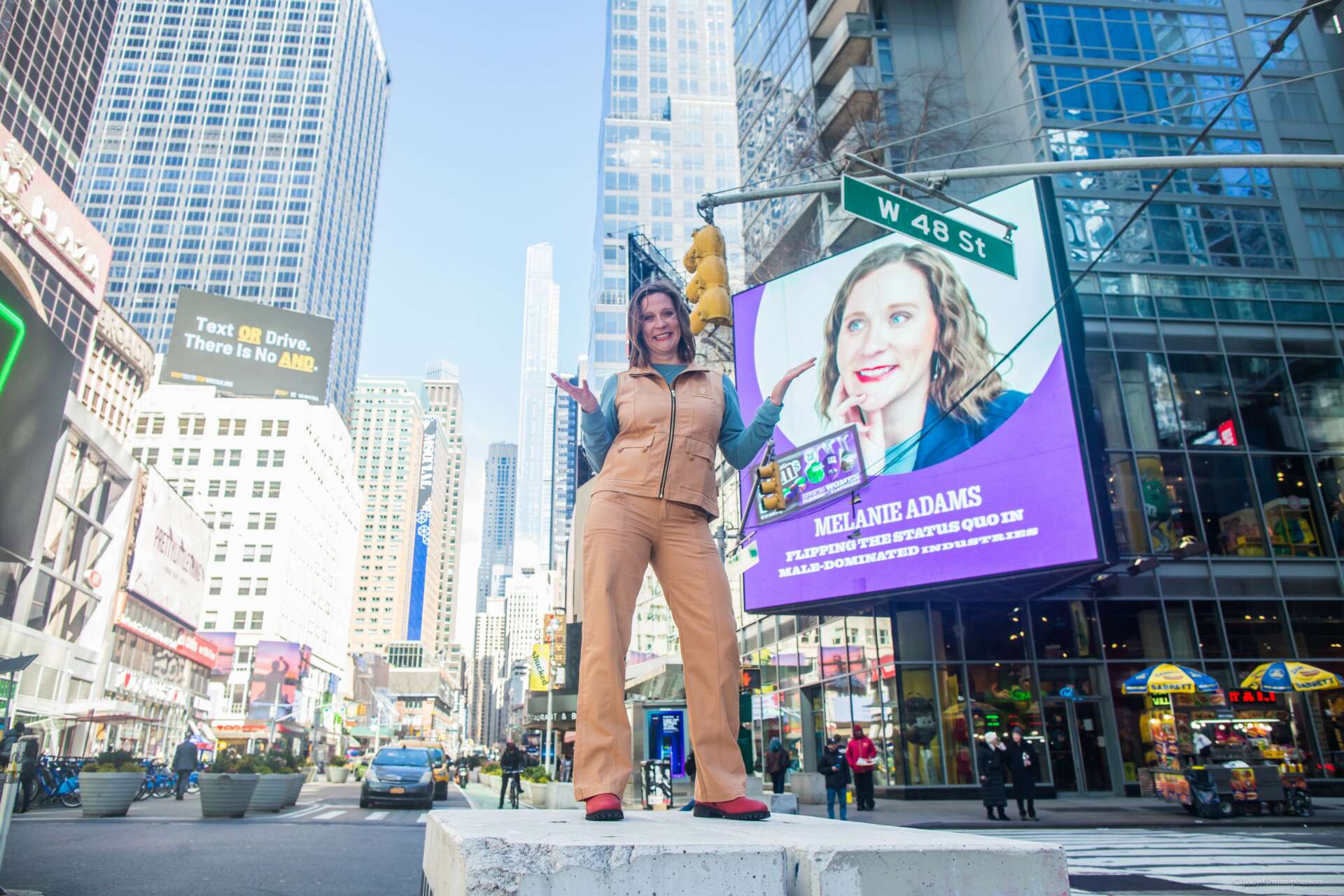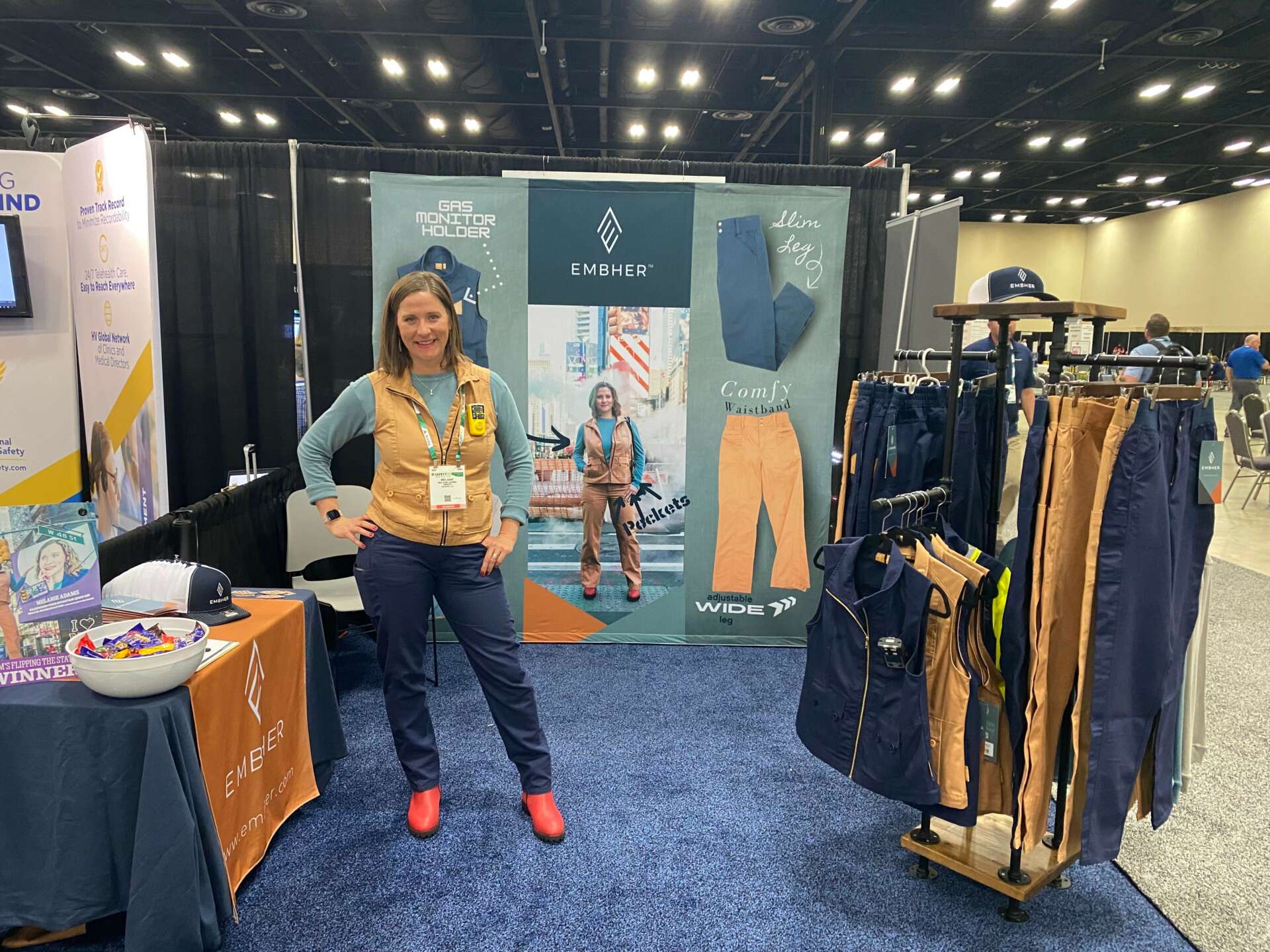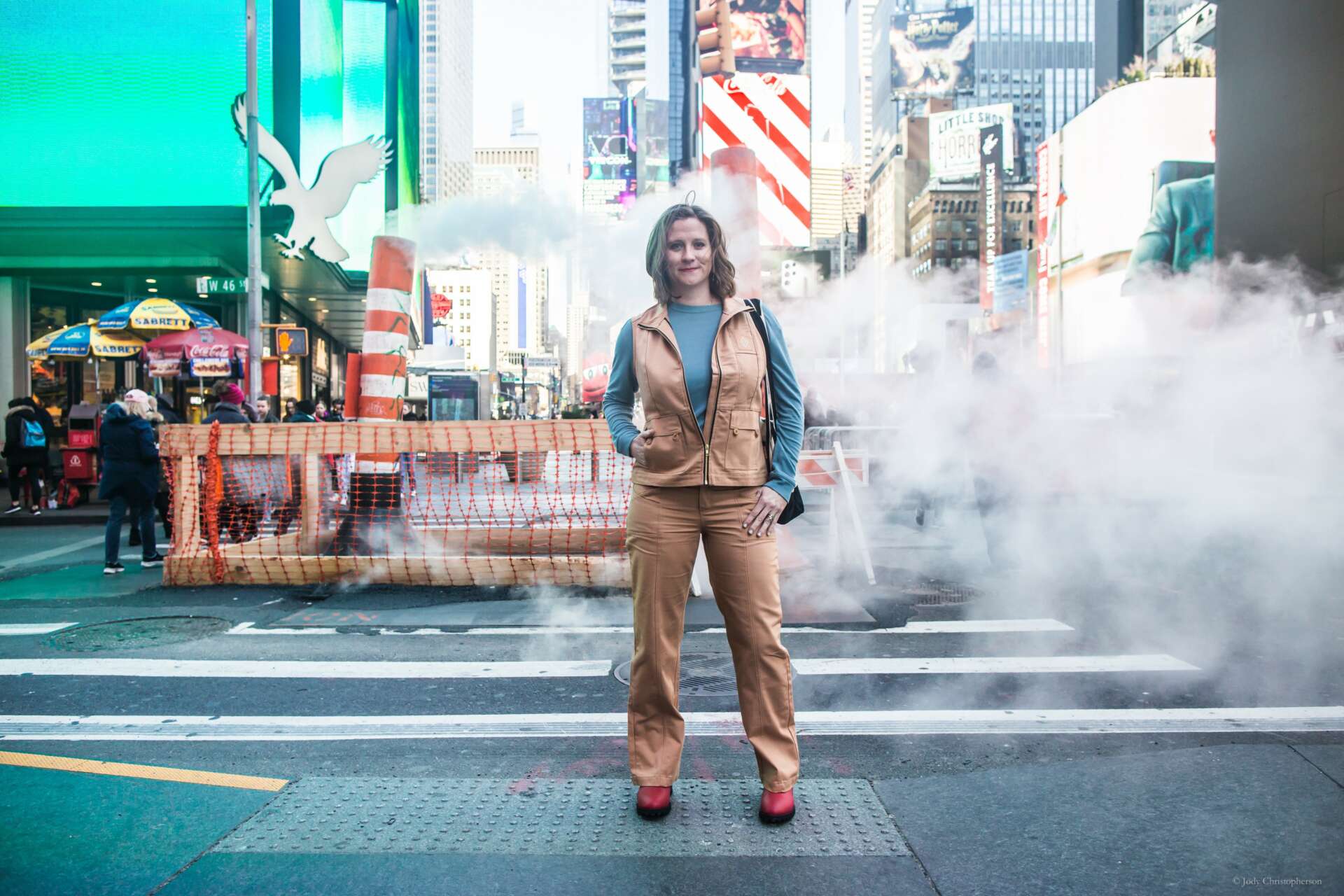We recently connected with Melanie Adams and have shared our conversation below.
Melanie, thanks for joining us, excited to have you contributing your stories and insights. Coming up with the idea is so exciting, but then comes the hard part – executing. Too often the media ignores the execution part and goes from idea to success, skipping over the nitty, gritty details of executing in the early days. We think that’s a disservice both to the entrepreneurs who built something amazing as well as the public who isn’t getting a realistic picture of what it takes to succeed. So, we’d really appreciate if you could open up about your execution story – how did you go from idea to execution?
I’ve had the idea for my business for a really long time! After feeling less than confident in my scratchy coveralls working in the oil and gas industry, and being mistaken as an HVAC mechanic instead of a patron at a restaurant, I realized there had to be a better option for my workwear uniform, but after searching for women’s gear, there just wasn’t. It took me being laid off from my corporate job after 18 years to realize I was the one that needed to solve the problem for the millions of women working in industrial roles. And you may not think of women in factory floors, on drilling rigs or in power plants, but they’re there. And like me, they struggle to find personal protective equipment (PPE) that is actually made for them. So after my divine intervention (the layoff!) I decided it was time for me to learn how to make flame-resistant clothing that would be comfortable for women. I spent time with a friend from high school who is a graphic designer to start the concept and find a name (which I love) and then I did a crowdfunding campaign and raised $14,000 in two weeks. I used that money to hire an official branding company to refine the brand into what it is today. I hired a product developer who started the process, but I quickly realized that I didn’t have the skills I needed to properly direct her, or tell her why I didn’t like the way the clothes were fitting. So, I took a 14-week patternmaking class to learn not only the language of the apparel industry, but also how to make the patterns myself. I was able to correct the patterns to my liking and off I went to the factory with my newly developed garments. After lots of back and forth, we finalized the clothing and I am very happy with our first version of flame-resistant clothing made by women for women.


As always, we appreciate you sharing your insights and we’ve got a few more questions for you, but before we get to all of that can you take a minute to introduce yourself and give our readers some of your back background and context?
I spent nearly two decades wearing ill-fitting flame-resistant clothing on the job when I worked for a major oil and gas company. I started at the front desk and worked in various roles with increasing responsibility and found myself many times as the youngest or the only female in the room at most meetings. I was comfortable there. But get to me to the field, and that’s where I felt different. Working in “male populated” industries as a woman is hard enough, let alone showing up to the job site feeling less than confident and comfortable in clothing that is made for a man. I have a masters degree in Environmental Policy but I knew nothing about clothing design. I am a lifelong learner and love a good challenge, so, I took a 14-week pattern making class and 3D garment design software to learn about how garments are constructed and what makes them comfortable. I am curious and resourceful, two things that have helped me overcome challenges this far in my business. In 2023, I won M&M’s flipping the status quo award on International Women’s Day and was featured on the Jumbotron in Times Square. A true pinch me moment! I am on mission to bring equality to the PPE market and I am passionate about inspiring young girls to get into the trades and STEM roles and now I know they no longer are forced to choose between safety and confident style, they can wear Embher!


Can you open up about how you funded your business?
I have a unique business structure that allowed me to use the 401k money that I had spent nearly two decades saving. When I was younger, hired at age 19 at the oil company, I was given some advice to max out my contributions, especially the amount that they were matching. And it was one of the smartest decisions I ever made. If I wouldn’t have saved that money, I would have just spent it as a twenty-something year old. But instead I was able to put that money to work on my business now using the Rollover for Business Startup (ROBS) structure and starting the business as a corporation. I’m proud that I’ve been able to maintain complete ownership and turn this into a thriving business on my own (with of course the support of my amazing husband!).
What do you think helped you build your reputation within your market?
I think having a successful career as an energy professional gave me the right position to start this company. I spent nearly two decades in the oil and gas industry before I decided to take on the problem of ill-fitting workwear for women and build a solution for me and for them. It’s the relationships that I built over that time that I go back to now to get introductions to major companies and to expand my network of women. Being able to talk authentically about the problem I’m solving and having experience in safety also allows me to have meaningful conversations with my customers and the decision makers. I also now have skills in patternmaking and learning more about textiles to answer questions from that aspect as well.
Contact Info:
- Website: https://embher.com/
- Instagram: https://www.instagram.com/embherfrc/
- Facebook: https://www.facebook.com/embherfrc
- Linkedin: https://www.linkedin.com/company/embher


